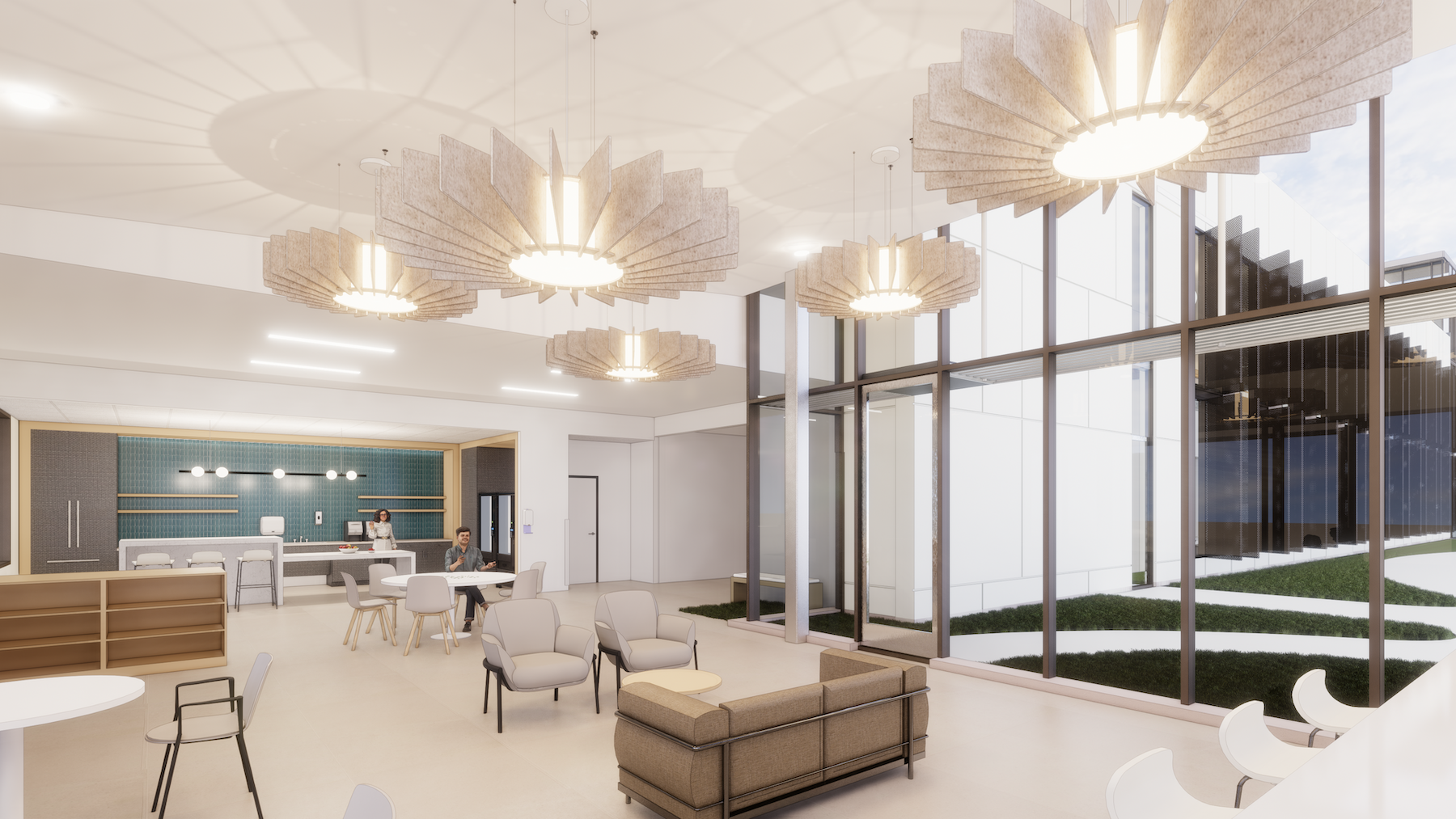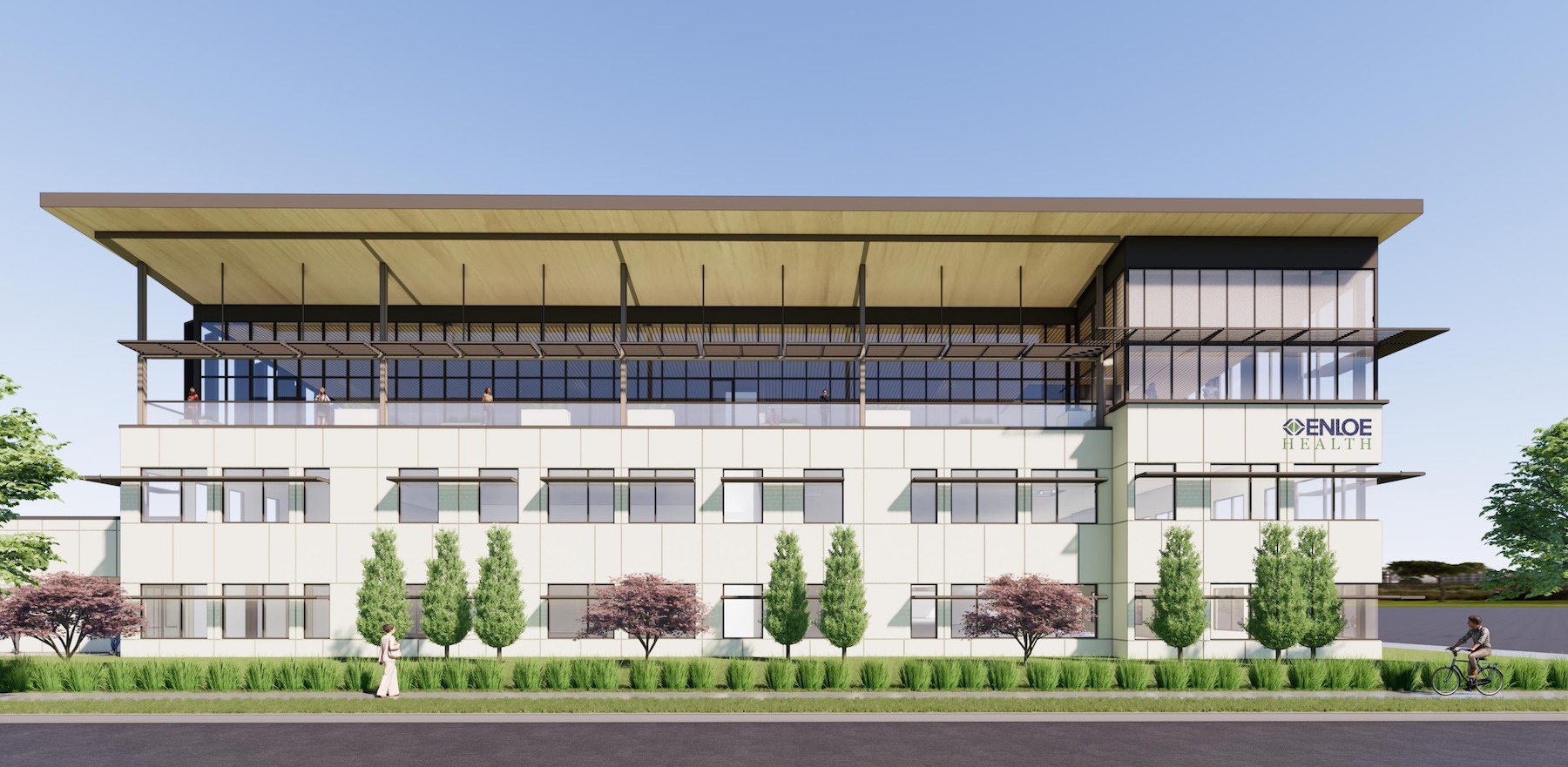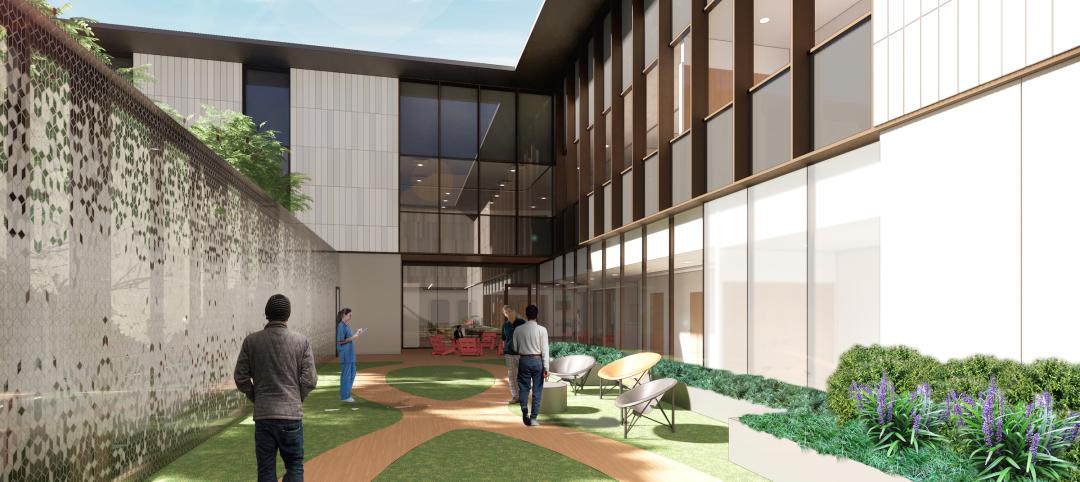Design-build and, to a somewhat lesser degree, Integrated Project Delivery (IPD) have become increasingly popular and common contract platforms for healthcare projects. These agreements promise greater efficiency and share the profit risk on new construction among developers, health systems, and AEC firms.
Add to that list of options Collaborative Project Delivery (CPD), which Covalus—a Dallas-based healthcare project management consultant that has pioneered this contractual initiative—says simplifies IPD in ways that make it more attractive to participants without sacrificing IPD’s benefits.
Also see: Healthcare construction costs for 2024
Covalus claims that CPD has been applied to more than $3 billion in healthcare projects. One of these is Enloe Health’s Comprehensive Cancer Center, a 107,000-sf outpatient building on 13 acres in Chico, Calif. This three-story project, valued at $154 million, broke ground this month, and is scheduled for completion in Spring of 2026.
According to this project’s general contractor Swinerton, CPD is different from other contractual agreements in that it allows team members to contribute a specific fee that they can earn back by achieving agreed-upon performance thresholds. “This simplified form of agreement eliminates the need for complex, multiparty legal and insurance mechanisms,” said Swinerton in a prepared statement.
Separate contracts, bridged together
Enloe Health’s previous experiences with projects under conventional design-bid-build contracts had left a bad taste in its mouth because those contracts opened the door for change orders that impacted negatively on the project’s cost, explained Kevin Woodward, Enloe Health’s chief financial officer.
There was also some urgency in finding the right project manager for its proposed Comprehensive Cancer Center. The region that encompasses Chico has one of the highest rates of cancer-related deaths in California. However, said Woodward, 60 percent of the region’s cancer patient population was bypassing Enloe Health’s facilities because they didn’t have the care capacity to handle that level of patient volume.
Enloe Health worked with ECG Management Consultants, a division of Siemens Healthineers, to conduct a space analysis to determine the size and prospective cost of a new CCC. After its board signed off on the facility, Enloe partnered with Covalus, which Woodward said had more-refined costing tools, and a track record with project management under CPDs.
By that time, HGA was already attached as the project’s design-architect. James Willsie, Principal and Associate Vice President with HGA, explained in an email to BD+C how CPDs differ from other delivery contracts:
“Typically with design building, there is one contract between the owner and the contractor, with the design team as a sub. With IPD, typically there is a three-way contract [among] the owner, contractor, and architect, with a target cost and schedule. There is profit at risk for the contractor, architect, and typically further downstream [for] consultants and subs, [which] becomes a project contingency.”
For a CPD, on the other hand, says Willsie, “the owner has a contract directly with the architect, a separate contract directly with the contractor, and a contract directly with the owner’s representative. There is also a multiple-party contract among all four parties that sets up profit at risk and enhanced profit put up by the owner.” The profit at risk and incentive pool are distributed upon meeting prearranged targets for schedules, budget, and a regularly administered feedback survey of the owner. The incentive pool is pushed through to key consultants and subcontractors, says Willsie.
Additional collaborators on the Enloe Health project include Buehler Engineering (SE), ECOM Engineering (electrical and low voltage engineering), Weston & Associates (M/P engineering), Criterion (medical equipment planning), NorthStar (CE), and Marquis (security).
Similar to design-build and IPD, CPD utilizes big room meetings, Target Value Delivery, RO logs, and other lean delivery principles, says Willsie.

Cost predictability a goal
Any level of contractual collaboration requires give and take from all participants. That includes a strategic vetting of partners for purposes of compatibility; early engagement of project team members to define objectives and goals, as well as performance parameters; and ongoing communication among all stakeholders, according to a December 31, 2022 posting by AIA Contract Documents, which are the starting points for Covalus’ CPDs.
During the design process for Enloe Health’s new cancer center, HGA’s Design Insight Group used research and benchmarking to cross-check and validate decisions. Enloe provided data to modify designs and determine how they might improve space programming. “The data we review is critical to achieving operational efficiency and treatment outcomes while improving the experiences of patients, physicians, and medical support staff alike,” said Jennifer Ries, HGA’s Senior Medical Planner, in a statement posted on the firm’s website.
In an interview with BD+C, Mark Chenoweth, Founder and Principal of Covalus, said that his firm started using CPD contracts about seven or eight years ago. He explained that CPDs combine the benefits and efficiencies of IPDs with traditional delivery methods. “CPDs preserve traditional contractual arrangements, and the contracts are tied together by bridge agreements,” Chenoweth elaborated. He added that CPDs stipulate a guaranteed maximum price for a project, which IPDs do not. (The GMP for Enloe Health’s project will be nailed down on June 1, said Woodward.)
Chenoweth said that owner expectations of CPDs revolve around cost predictability, value, speed to market, and team performance.
“CPDs set realistic value for the work and process,” said Chris Morris, Vice President-National Healthcare at Swinerton, for which the Enloe Health project is its first under an CPD contract. “If you have a good roadmap, the team feels success.” Morris said that one of the goals for these incentives-based team collaborations is to avoid “non-rewarding” work, like value engineering.
Concise construction management
Chenoweth explained that the fee that contractual partners pay as part of the contract is a percentage of the cost of work and a portion of the minimum amount of the profit at risk; a kind of buy-in, he agreed. For the Enloe Health project, every firm under the CPD contract will receive at least 1.5 percent of their overhead. (That percentage, said Woodward, is one-third of the profit-at-risk for the contract’s participants. In Swinerton’s case, the 1.5 percent is equivalent to about $250,000, he said.)
Woodward, whom BD+C interviewed yesterday, said that Enloe Health has been satisfied with the results from the CPD. “It’s been a great project, and we’re right on track.” Woodward has been particularly impressed with the problem solving in big room meetings, Covalus’ representation on behalf of the owner, as well as with the “visibility” that Enloe has had into the bids from all of the trades.
The new Comprehensive Cancer Center in Chico will include three linear accelerator vaults and a 56-bay infusion center, according to Jolene Francis, Enloe Health’s Vice President of Philanthropy and Communications. Enloe expects the new center to create between 75 and 100 permanent jobs.
Chenoweth said that Covalus is managing other healthcare projects under CPD contracts in the Midwest and East Coast, and is talking with six other health systems. Morris speculated that healthcare sector has been amenable to these kinds of contracts because they “add structure to a complicated business that is ripe for change. CPDs are more concise and consistent.”
Related Stories
Healthcare Facilities | Mar 26, 2023
UC Davis Health opens new eye institute building for eye care, research, and training
UC Davis Health recently marked the opening of the new Ernest E. Tschannen Eye Institute Building and the expansion of the Ambulatory Care Center (ACC). Located in Sacramento, Calif., the Eye Center provides eye care, vision research, and training for specialists and investigators. With the new building, the Eye Center’s vision scientists can increase capacity for clinical trials by 50%.
Healthcare Facilities | Mar 25, 2023
California medical center breaks ground on behavioral health facility for both adults and children
In San Jose, Calif., Santa Clara Valley Medical Center (SCVMC) has broken ground on a new behavioral health facility: the Child, Adolescent, and Adult Behavioral Health Services Center. Designed by HGA, the center will bring together under one roof Santa Clara County’s behavioral health offerings, including Emergency Psychiatric Services and Urgent Care.
Healthcare Facilities | Mar 22, 2023
New Jersey’s new surgical tower features state’s first intraoperative MRI system
Hackensack (N.J.) University Medical Center recently opened its 530,000-sf Helena Theurer Pavilion, a nine-story surgical and intensive care tower designed by RSC Architects and Page. The county’s first hospital, Hackensack University Medical Center, a 781-bed nonprofit teaching and research hospital, was founded in 1888.
Project + Process Innovation | Mar 22, 2023
Onsite prefabrication for healthcare construction: It's more than a process, it's a partnership
Prefabrication can help project teams navigate an uncertain market. GBBN's Mickey LeRoy, AIA, ACHA, LEED AP, explains the difference between onsite and offsite prefabrication methods for healthcare construction projects.
Modular Building | Mar 20, 2023
3 ways prefabrication doubles as a sustainability strategy
Corie Baker, AIA, shares three modular Gresham Smith projects that found sustainability benefits from the use of prefabrication.
Building Tech | Mar 14, 2023
Reaping the benefits of offsite construction, with ICC's Ryan Colker
Ryan Colker, VP of Innovation at the International Code Council, discusses how municipal regulations and inspections are keeping up with the expansion of off-site manufacturing for commercial construction. Colker speaks with BD+C's John Caulfield.
Healthcare Facilities | Mar 13, 2023
Next-gen behavioral health facilities use design innovation as part of the treatment
An exponential increase in mental illness incidences triggers new behavioral health facilities whose design is part of the treatment.
Healthcare Facilities | Mar 6, 2023
NBBJ kicks off new design podcast with discussion on behavioral health facilities
During the second week of November, the architecture firm NBBJ launched a podcast series called Uplift, that focuses on the transformative power of design. Its first 30-minute episode homed in on designing for behavioral healthcare facilities, a hot topic given the increasing number of new construction and renovation projects in this subsector.
Sustainability | Mar 2, 2023
The next steps for a sustainable, decarbonized future
For building owners and developers, the push to net zero energy and carbon neutrality is no longer an academic discussion.
University Buildings | Feb 23, 2023
Johns Hopkins shares design for new medical campus building named in honor of Henrietta Lacks
In November, Johns Hopkins University and Johns Hopkins Medicine shared the initial design plans for a campus building project named in honor of Henrietta Lacks, the Baltimore County woman whose cells have advanced medicine around the world. Diagnosed with cervical cancer, Lacks, an African-American mother of five, sought treatment at the Johns Hopkins Hospital in the early 1950s. Named HeLa cells, the cell line that began with Lacks has contributed to numerous medical breakthroughs.

















